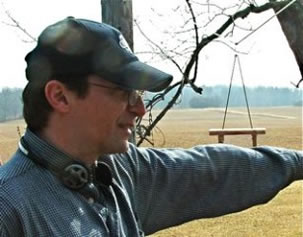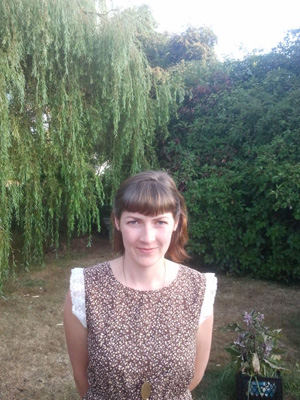Connecting with the Subject:
Stephanie Harrington in Conversation with Armand Garnet Ruffo

Malahat volunteer Stephanie Harrington talks with Issue #183 contributor Armand Garnet Ruffo on his story, "Man Changing into Thunderbird".
You were raised in Chapleau, a small town 190km northeast of Sault Ste Marie in northern Ontario, which seems close (at least on a map) to Beardmore, where Norval Morrisseau was born. You also both share Ojibway heritage. Growing up, were you aware of Morrisseau's significance as a painter? What did you know about him?
Actually Chapleau is a three-day drive east of Beardmore, which is closer to Thunder Bay. Northern Ontario is bigger than most realize. Unfortunately I knew nothing about Morrisseau growing up. Researching Man Changing Into Thunderbird, I learned that he participated in an educational tour of northern Ontario schools. I was in High School at the time but he never came to Chapleau because we didn’t have an art program, and I suppose there wasn’t any support for it. So much for a northern education.
Much has been written about Norval Morrisseau as the founder of the Woodland style of painting, as well as his significant contribution to Canadian art. After your work on the National Gallery of Canada retrospective, what made you decide to pursue Morrisseau’s story further?
I got introduced to his art around 1978 when I was a student working in Ottawa for The Native Perspective Magazine. It immediately captivated me, and over the years I even went to a few of Morrisseau’s exhibitions, but I really didn’t know much about his art or him. Jump ahead nearly thirty years; when the NGC asked me to write something I initially thought I would write a relatively short piece. Something neat and concise that worked for the catalogue. I never thought it would turn into a book length manuscript of about three hundred pages, but once I met him and talked to people who knew him, started reading various things about him, I found I couldn’t stop researching and writing; I guess you could say the project started to consume me. I suppose I knew instinctively it was going to be much bigger than what I had anticipated.
Can you explain if you had any reservations writing about Morrisseau? Why did you feel compelled to explore the life of a fellow Ojibway artist?
Yes, I had all kinds of reservations writing about him. First, I am neither a historian nor an art historian for that matter, and I knew that if I were to write about him it would be something literary – by this I mean I would want some element of creativity in the writing; I didn’t want simply straight reportage. I’m just not very interested in that kind of writing. Like most people I also knew that Morrisseau’s life was unconventional, controversial, and maybe even tragic – we all remember the images of him on Vancouver’s streets. And, yet, above and beyond all this are his great artistic achievements, which cannot be denied, the fact that he always spoke of his work in the context of reassembling the pieces of what he called “The Great Ojibway Nation,” and that he was always a very spiritual person. I also have to say that Morrisseau was born around the same time as my Ojibway mother so there was a connection, I suppose, that compelled me to pursue the project. By this I mean that much of what Morrisseau went through – his attachment to old traditions, residential school, poverty, for example – were experiences shared by many. And, of course, I simply found his life and career fascinating. I mean here was a man who would make all kinds of money and yet live day to day.
The National Gallery retrospective was hosted in 2006, and seven years later you are still steeped in Morrisseau's life. Can you talk about the research that went into this book? What was it like interviewing the artist himself, a man who has indeed become myth-like in stature?
I wrote the piece for the NGC in the winter of 2006; I then jumped into directing a movie that I wrote called A Windigo Tale. There’s a tremendous amount of work that goes into planning and making a feature film so I immediately dropped the Morrisseau project until the shoot was finished in November of 2006. Unfortunately, we ran out of money so I was involved in raising more money to finish the film, and restructuring with the script to make it affordable, while I was researching Morrisseau. Then in 2009, I finally had enough money to complete the film, and I again had to put the book aside. The film was finally released in 2010 (and won Best Picture at the 35th American Indian Film Festival in San Francisco), and so it was only in late 2010/ early 2011 that I got back into it. So although I started working on it in 2006, it is really only in the last couple of years that I had time to focus on it – while teaching and coediting the latest edition of An Anthology of Canadian Native Literature in English for Oxford U Press, I might add.
As for the research, in addition to Morrisseau himself, I interviewed some forty people who knew him – the majority intimately. While there’s a lot written about his art, and his life in the context of his art, there isn’t really much about the details of his life -- so my research was mostly primary, and it took a long time because I had to track all these people down. I mean I even flew to Prague to interview someone who had worked with Morrisseau in the 70s. In addition to family, friends, lovers, apprentices, fellow artists, etc., I relied on the archives, and newspapers -- and there are lots of articles about him because he’s never really been out of the news – as well as essays from art catalogues, the odd book, academic work... That kind of thing. I interviewed Norval a few times. He was always kind and forthcoming, and he in fact told me ‘not to leave out anything’ which turned out to be a crazy huge job. Even though he was in a wheel chair when I met him, I have to say that he still exuded charisma, power, whatever you want to call it. He was still very intimidating, but like I said, he was very kind and generous to me.
The extract from “Man Changing into Thunderbird’ is incredibly evocative and detailed. The reader, for example, feels as if they are in the tent with the Conjurer when Norval was a boy. How did you manage to inhabit Morrisseau's world so fully? Was it difficult to see the world through his eyes?
A few people who have seen or heard the work have asked me this. I guess it has to do with connection. I probably wouldn’t have written the book had I not felt some kind of connection to the subject. I’m sure it has to do with Morrisseau being both Ojibway and an artist, but once I got into the writing it just took on a life of its own. Like I said, once I started I couldn’t put it down, despite being side tracked and derailed a few times along the way. And I suppose the fact that I know the physical northern landscape and culture to some extent doesn’t hurt. In fact, it might even be essential. For me the writing wasn’t difficult, it came, it was finding the time to do it.
As a professor at Carleton University, your research interests include the "complex relationship between Indigenous peoples and the colonizer in terms of representation and power". This seems an apt description of Morrisseau's relationship with Esther and Joseph Weinstein. Although they were extraordinary supporters of Morrisseau, you write that Joseph "becomes aware that they can never be intimate friends". Can you tell us about how you sought to portray Morrisseau's relationship with well-intentioned people like Joseph Weinstein?
I suppose in a nutshell, Morrisseau used these people for his own advantage as many people used him and made a profit off his art. I don’t mean this in necessarily a negative sense; you have to understand that Weinstein was only too happy to support a young struggling artist who happened to have a particular kind of genius, and Morrisseau was only too happy to sell his art to whomever would buy it for whatever price. On a more fundamental level, the relationship between Morrisseau and people like the Weinsteins comes with all kinds of baggage, as you say, related to power, disenfranchisement, etc., which ultimately has to do with colonialism. He met the Weinsteins in the late 1950s. It was a very different Canada. To put it in perspective, you have to remember that First Nations people didn’t get the vote until 1960. Aboriginal people were very much “the Other.”
Although you are primarily described as a poet, Man Changing into Thunderbird is your second creative biography, the first being Grey Owl, the Mystery of Archie Belaney. Why are you attracted to this form? How does this latest book differ from Grey Owl?
I’m really not sure why I’m attracted to the form; maybe the form is attracted to me? I never set out to write about either Grey Owl or Morrisseau so I think they may have found me as much as I found them. But, of course, both of them are extremely interesting. What I think attracted me to Grey Owl, besides the fact that he lived with my family in Biscotasing in the 1920s, was that in writing about him I found myself exploring the whole issue of identity – how do we become who we are? As for Morrisseau, once I started writing about him, I realized that I was exploring ideas of spirituality and resistance to assimilation. Each book takes its own form and, aside from a few poems, this latest one is primarily prose and therefore much wordier.
Finally, was Morrisseau able to read anything you had written about him before he died in 2007? How do you think he would feel about this book?
Yes, I flew back to Nanaimo where he was living and read him a few pieces. My intention was to see if he approved. I respected what he had done for Anishinaabe – he created an art form where there was none -- and so I figured that if he didn’t approve I would abandon the project. What happened was quite the opposite. One of the pieces about his Grandfather made him weep, and after I finished reading, he paused, and then said that I have his “Shamanic Blessing.” He also asked me what took me so long to show up. I think he knew.
Have I missed anything important that you would like to add? I must say, it is amazing to see the possibilities that creative non-fiction opens up for revealing the ‘truth’ of a story, more so than straight reportage.
Just to say that the form allows me to break with the conventions of realism in a sense that Norval Morrisseau’s world-view was very much tied to the mythic and shamanic world of the Ojibway, and I’ve included these elements in the narrative to tell his story. I sent it to one publisher who said they enjoyed the writing but wouldn’t know what to do with it. Whatever that means. So I suspect they’ll be criticism of one sort or another. And the book is finished and should be out next year. Miigwetch.

Stephanie Harrington
* * * * * * * *









